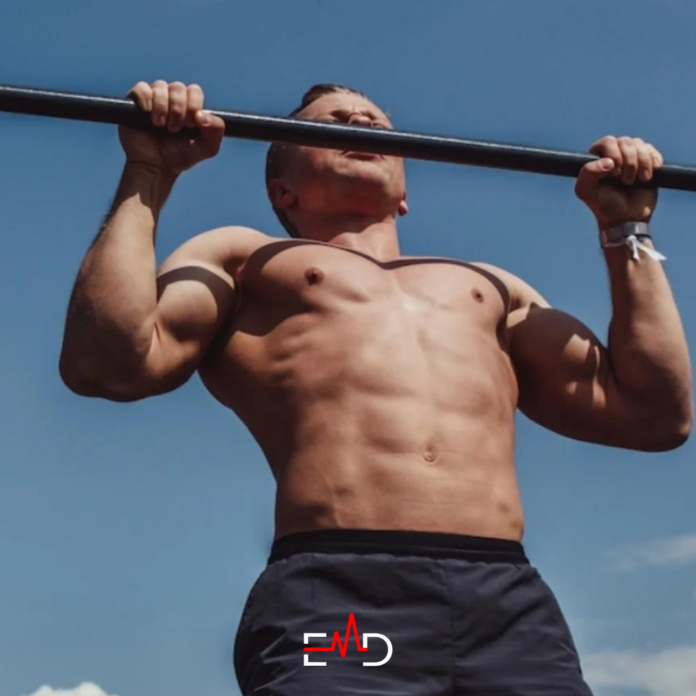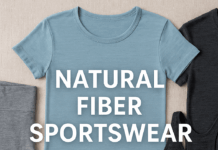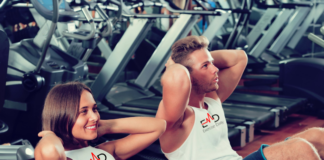Exercise Daily – Calisthenics has gained significant popularity as an effective form of exercise for weight loss. It combines strength training and aerobic exercise, utilizing bodyweight movements to improve overall fitness levels. This ultimate guide will delve into the science behind calisthenics for weight loss, explaining why it is an excellent choice for individuals looking to shed excess pounds.
Calisthenics is a training that uses bodyweight exercises to increase strength, improve flexibility and overall fitness level. It’s a form of exercise that uses one’s body to provide resistance and eliminates the requirement to use equipment or weights. Calisthenics workouts include push-ups lunges, pull-ups and squats, planks, and many different movements.
![The Science Behind Calisthenics for Weight Loss [Ultimate Guide]](https://exercisedaily.com/wp-content/uploads/2023/06/Warm-up-Exercises-scaled.jpg)
Best Calisthenics Exercises to Lose Weight Loss
1. Warm-up Exercises
Before you begin the primary calisthenics workout, it’s crucial to prepare your body. Do dynamic stretching and exercises for mobility to improve the flow of blood into your muscle and prepare them for your workout. Warm-up exercises can include swings of the legs, and shoulder rolls.
2. The High-Intensity Interval Train (HIIT)
The HIIT program is an effective method to lose weight, using short bursts that are intense exercise and short intervals of recovery. It can help you burn off an impressive amount of calories in a relatively short period of time and aids in losing fat. The HIIT program can be included in workouts for calisthenics, by doing exercises like burpees, jumping over jacks, mountain climbers, and other such exercises at intervals.
3. Burpees
Burpees are a full-body exercise that targets different muscle groups, while also increasing the heart rate. For a burpee to be done begin in an upright position, then lower yourself to a squat, put your feet on the ground. push your feet into a push-up posture, perform a push-up and then swing your feet to your hands, then leap high up into the air. Repeat this motion for a specific number of times.
4. Jumping Jacks
Jumping jacks are a well-known exercise that increases your heart rate and engages the muscles of your legs. Start in a standing position with your feet in a row with your arms close to your sides. Jump while simultaneously spreading your legs further than hip-width apart while lifting your arms up above your head. Then, jump again and return to the beginning position. Repeat this process for the desired time.
5. Mountain Climbers
Mountain climbers work on your shoulders, core, and legs. Start by forming a plank by placing your hands right beneath your shoulders, and your body straight. Place one knee on your chest. Then, quickly change to the other leg, as if were climbing the mountain. Engage your core and keep a steady pace. Do mountain climbers for a certain number of repetitions or timed duration.
6. Squats
Squats are an exercise that targets the lower part of your body, including your quadriceps, glutes, and hamstrings. Place your feet shoulder-width apart, with your toes slightly angled out. lower your back by bending your knees, then pulling your hips back like you’re sitting in the chair. Keep your chest in a straight line and your weight on your heels. Return to your starting position by driving your heels while extending your hips. Repeat until you reach your desired number of repetitions.
7. Lunges
Lunges work on your leg muscles, and can help increase your stability and balance. Begin by standing up high with your feet about hip-width apart. Step ahead with your right foot. Continue dropping the body to where your left knee is at a 90-degree angle. Keep your chest in place and your core firmly engaged. Press your right heel until you return to your starting position and repeat the same on the opposite leg. Perform lunges for the desired number of times for each leg.
8. Push-ups
Push-ups are a popular calisthenics workout that builds your shoulders, chest, and triceps as well as your core. Start in a plank with your hands a little wider than shoulder-width apart. Reduce your upper body using your elbows and make sure they are close to your sides until your chest is almost touching the floor. Return to the starting point. Modify the workout by performing push-ups with your knees or against the wall if required. Set a goal for a certain amount of push-ups. You can also do them for a specific duration.
9. Plank
Planks are great for building your core muscles like the abs, your obliques, and your back. Start in the plank position, by placing your hands between your shoulders and keep your body in unison from head to foot. Work your abdominal muscles and stay in the position for the desired time, while focusing on keeping good posture. It is also possible to do side planks in order to strengthen your obliques. Be sure to breathe in a steady manner during the exercise.
10. Bicycle Crunches
Bicycle crunches can be a beneficial exercise that targets the abdominal muscles, specifically the Obliques. Lay on your back flat with your hands in front of your head. Keep your legs elevated with your knees bent at 90 degrees. You can crunch, and then bring your right elbow toward your left knee, while simultaneously extending the right side of your leg. Repeat the same motion on the opposite side, moving your left arm towards your right knee while extending the left leg. Repeat the opposite side by pedaling a set number of times.
11. Russian Twists
Russian twists work your core, which includes your abs and the obliques. Place your feet at the bottom of your mat with your knees bent, and your feet slightly lifted from the floor. Lean back a bit while keeping a straight back. Engage your core. Place your hands together on your front and turn your torso towards the right, placing both hands next to your hip. Then, twist to the left and then touch with the ground on your opposite side. Repeat the twists on both sides until you reach a certain amount of turns.
12. Leg Raises
Leg raises focus on the lower abdominal muscles. Place yourself on your back, flat, while extending your legs, and your arms close to your sides. Then lift your legs from the floor while keeping them straight until they are parallel to the ground. Then slowly lower them without touching the ground, and repeat the exercise for a set amount of repetitions. To make it more difficult you can do leg raises by using your hands to support your lower back, or hanging from the pull-up bar.
![The Science Behind Calisthenics for Weight Loss [Ultimate Guide]](https://exercisedaily.com/wp-content/uploads/2023/06/The-Science-Behind-Calisthenics-for-Weight-Loss.jpg)
How Calisthenics Helps with Weight Loss
Exercises in the form of calisthenics offer many benefits in terms of weight loss. First, they are extremely efficient in burning calories, which is vital to create the necessary calorie deficit to lose weight. Furthermore, calisthenics training builds muscles that are lean boosts metabolism, and allows you to get more calories burned even when you’re at the most restful. Furthermore, these workouts improve fitness levels, and increase flexibility and overall strength. Calisthenics provides numerous advantages which make it a great option for losing weight:
1. Muscle Development and Metabolism Boost
Regularly performing calisthenics workouts aids in building the mass of your muscles. Since muscles are active metabolic tissues and have a high metabolic rate, the greater the muscle mass you possess the greater the metabolic rate at rest. This means that, even when you’re not working the body burns more calories, which can contribute to weight reduction.
2. Caloric expenditure in Calisthenics
The workouts for Calisthenics are generally intensive and require significant energy expenditure. The more complex movements, such as mountain climbers or burpees involve multiple muscle groups at the same time and result in increased calorie burning. The increased caloric intake helps to lose weight by making a calorie deficit.
3. High-Intensity Interval Training (HIIT) as well as Fat burning
A lot of calisthenics exercises incorporate intense intervals of workouts (HIIT). The HIIT method involves alternate periods of intense training with shorter intervals of recovery. It has been demonstrated to be effective in burning fat and boosting cardiovascular fitness, which makes it a useful method for losing weight.
4. The Role of Calisthenics In conserving Lean Muscle Mass
In the process of losing weight, it is essential to maintain the lean mass of your muscles. Exercises that involve calisthenics, like squats and pull-ups target several muscle groups at once and help keep the muscle mass in place while also shedding weight. This results in a toned and slim physique, not an unflattering appearance that is often caused by rapid weight loss.
5. Greater Mobility and Flexibility
The exercises in Calisthenics include dynamic movements that increase agility and flexibility. A greater range of motion allows you to exercise with proper posture, reducing the possibility of sustaining injuries. In addition, the increased flexibility permits a wider variety of exercises, which keeps the workouts challenging and engaging.

Improving the Cardiovascular Health
Participating in calisthenics exercises will have positive effects on the health of your cardiovascular system. A combination of aerobic exercises and intense movements increases the heart rate and increases circulation. This results in improved endurance in the cardiovascular system, less risk of developing heart disease along with improved general cardiovascular performance.
Calisthenics vs. Traditional Weightlifting
Calisthenics and traditional weightlifting are two popular forms of exercise, each with its own benefits. While weightlifting focuses on lifting heavy weights to build muscle mass, calisthenics emphasizes using bodyweight movements for strength and endurance. Here are some key differences:
- Equipment: Calisthenics requires little to no equipment, making it accessible and convenient. Traditional weightlifting often involves specialized equipment like barbells, dumbbells, and machines.
- Functional Strength: Calisthenics promotes functional strength by utilizing movements that mimic real-life activities. Weightlifting, on the other hand, may develop more isolated muscle groups.
- Full-Body Engagement: Calisthenics engages multiple muscle groups simultaneously, providing a comprehensive full-body workout. Weightlifting allows for targeting specific muscle groups.
- Flexibility and Mobility: Calisthenics exercises incorporate dynamic movements that enhance flexibility and mobility. Weightlifting typically focuses on static movements with less emphasis on flexibility.
- Cardiovascular Fitness: Calisthenics workouts often include elements of cardio and HIIT, improving cardiovascular fitness. Weightlifting primarily focuses on strength and muscle development.
Calisthenics Workouts for Weight Loss
When designing calisthenics workouts for weight loss, it’s essential to incorporate a combination of strength training and cardiovascular exercises. Here are some effective calisthenics exercises for weight loss:
- Push-Ups: Targets the chest, shoulders, triceps, and core.
- Squats: Engages the lower body, including the quads, glutes, and hamstrings.
- Burpees: Combines a squat, plank, and jump, providing a full-body workout.
- Mountain Climbers: Targets the core, arms, and legs while increasing heart rate.
- Lunges: Works the quadriceps, hamstrings, glutes, and calves.
- Planks: Engages the core, shoulders, and upper body.
Incorporating these exercises into a well-rounded workout routine can maximize calorie burning and facilitate weight loss.
Designing an Effective Calisthenics Routine
To create an effective calisthenics routine for weight loss, consider the following factors:
- Set Goals: Determine your weight loss goals and tailor your routine accordingly. Whether it’s losing a specific number of pounds or inches, having a clear objective will guide your workouts.
- Progression: Gradually increase the intensity and difficulty of your exercises over time. This progression keeps challenging your body and ensures continuous improvement.
- Variety: Incorporate a variety of exercises that target different muscle groups. This prevents plateauing and keeps your workouts interesting.
- Rest and Recovery: Allow your body enough time to rest and recover between workouts. Adequate rest is crucial for muscle repair and growth.
- Consistency: Consistently follow your calisthenics routine to see significant results. Aim for a balanced mix of strength training and cardiovascular exercises throughout the week.
Proper Nutrition for Calisthenics and Weight Loss
While calisthenics is an effective tool for weight loss, it’s essential to complement your workouts with proper nutrition. Here are some key principles to follow:
- Caloric Deficit: Create a caloric deficit by consuming fewer calories than you burn. This encourages your body to use stored fat for energy, resulting in weight loss.
- Balanced Diet: Focus on a balanced diet that includes lean proteins, whole grains, fruits, vegetables, and healthy fats. This provides essential nutrients for muscle repair and overall well-being.
- Portion Control: Be mindful of portion sizes to avoid overeating. Practice portion control and listen to your body’s hunger and fullness cues.
- Hydration: Stay hydrated by drinking an adequate amount of water throughout the day. Water helps with digestion, metabolism, and overall health.
- Limit Processed Foods: Minimize consumption of processed and sugary foods, as they can hinder weight loss efforts and negatively impact your health.
15 Calisthenics Recipes for Weight Loss
The Role of Nutrition in Weight Loss
Before we dive into the recipes, it’s crucial to understand the role of nutrition in your weight loss journey. While exercise helps burn calories and increase muscle mass, a healthy diet ensures that your body receives the right nutrients to function optimally. By focusing on whole, nutrient-dense foods, you can control your calorie intake and maintain a calorie deficit, leading to weight loss. The following recipes are designed to provide balanced meals with a focus on lean proteins, healthy fats, and a variety of vegetables.
Recipe 1: Protein-Packed Scrambled Eggs
Ingredients:
- 3 large eggs
- 1/4 cup diced bell peppers
- 1/4 cup diced onions
- 1/4 cup chopped spinach
- Salt and pepper to taste
Instructions:
- In a bowl, whisk the eggs until well beaten.
- Heat a non-stick pan over medium heat and lightly coat it with cooking spray.
- Add the diced bell peppers and onions to the pan and sauté until they are softened.
- Add the chopped spinach to the pan and cook until wilted.
- Pour the beaten eggs into the pan, stirring gently to combine with the vegetables. 6. Cook the eggs, continuously stirring, until they are scrambled and cooked to your desired consistency.
- Season with salt and pepper to taste.
- Serve the protein-packed scrambled eggs hot, and enjoy a nutritious and filling breakfast that fuels your body for a productive calisthenics workout.
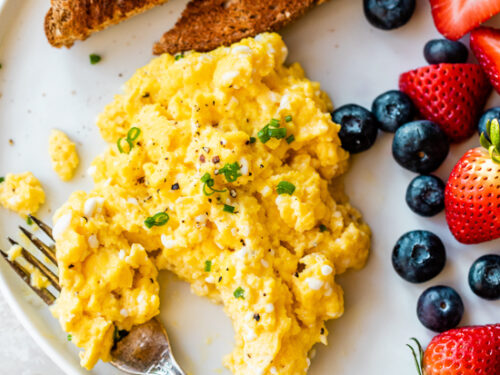
Recipe 2: Grilled Chicken and Vegetable Skewers
Ingredients:
- 2 boneless, skinless chicken breasts, cut into cubes
- 1 red bell pepper, cut into chunks
- 1 yellow bell pepper, cut into chunks
- 1 zucchini, sliced into rounds
- 1 red onion, cut into wedges
- 2 tablespoons olive oil
- 2 cloves garlic, minced
- Juice of 1 lemon
- Salt and pepper to taste
Instructions:
- Preheat the grill to medium heat.
- In a bowl, combine the olive oil, minced garlic, lemon juice, salt, and pepper to make the marinade.
- Thread the chicken cubes, bell peppers, zucchini slices, and onion wedges onto skewers, alternating between the ingredients.
- Brush the marinade over the skewers, coating them evenly.
- Place the skewers on the preheated grill and cook for about 10-12 minutes, turning occasionally, until the chicken is cooked through and the vegetables are tender.
- Remove from the grill and let them rest for a few minutes before serving.
- These grilled chicken and vegetable skewers make a flavorful and protein-rich meal that pairs perfectly with your calisthenics routine.

Recipe 3: Quinoa and Vegetable Stir-Fry
Ingredients:
- 1 cup cooked quinoa
- 1 cup mixed vegetables (such as broccoli florets, carrots, bell peppers)
- 1/2 cup snap peas
- 2 tablespoons low-sodium soy sauce
- 1 tablespoon sesame oil
- 2 cloves garlic, minced
- 1 teaspoon grated ginger
- Sesame seeds for garnish (optional)
Instructions:
- Heat the sesame oil in a large skillet or wok over medium heat.
- Add the minced garlic and grated ginger to the skillet and sauté for a minute until fragrant.
- Add the mixed vegetables and snap peas to the skillet and stir-fry for 4-5 minutes until they are tender-crisp.
- Stir in the cooked quinoa and drizzle the low-sodium soy sauce over the mixture.
- Continue stirring and cooking for an additional 2-3 minutes to heat everything through.
- Remove from heat and garnish with sesame seeds if desired.
- This quinoa and vegetable stir-fry is a nutritious and filling option that provides a balance of carbohydrates, protein, and fiber to support your weight loss and calisthenics journey.

Recipe 4: Greek Yogurt Parfait with Berries
Ingredients:
- 1 cup Greek yogurt
- 1/2 cup mixed berries (such as strawberries, blueberries, raspberries)
- 2 tablespoons honey
- 2 tablespoons granola
Instructions:
- In a glass or bowl, layer half of the Greek yogurt.
- Add half of the mixed berries on top of the yogurt.
- Drizzle 1 tablespoon of honey over the berries.
- Repeat the layers with the remaining Greek yogurt, mixed berries, and honey.
- Sprinkle the granola on top as a crunchy and delicious topping.
- Enjoy this Greek yogurt parfait as a refreshing and protein-packed snack that satisfies your sweet tooth while keeping you on track with your weight loss goals.
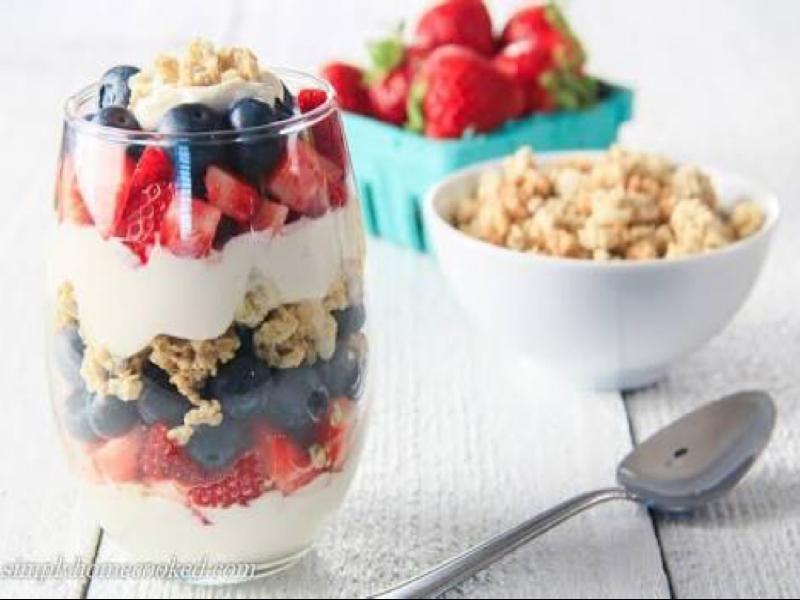
Recipe 5: Sweet Potato and Black Bean Chili
Ingredients:
- 1 large sweet potato, peeled and diced
- 1 can black beans, drained and rinsed
- 1 can diced tomatoes
- 1 onion, chopped
- 2 cloves garlic, minced
- 1 tablespoon chili powder
- 1 teaspoon cumin
- 1/2 teaspoon smoked paprika
- Salt and pepper to taste
- Optional toppings: chopped cilantro, avocado slices, lime wedges
Instructions:
- Heat a large pot over medium heat and add a drizzle of olive oil.
- Add the chopped onion and minced garlic to the pot and sauté until they are fragrant and translucent.
- Add the diced sweet potato to the pot and cook for a few minutes until it starts to soften.
- Stir in the chili powder, cumin, smoked paprika, salt, and pepper, coating the ingredients evenly.
- Add the black beans and diced tomatoes (with their juice) to the pot, stirring to combine.
- Bring the mixture to a boil, then reduce the heat and let it simmer for about 20-25 minutes, or until the sweet potatoes are tender.
- Adjust the seasoning if needed.
- Serve the sweet potato and black bean chili hot, garnished with chopped cilantro, avocado slices, and a squeeze of lime juice for an extra burst of flavor.
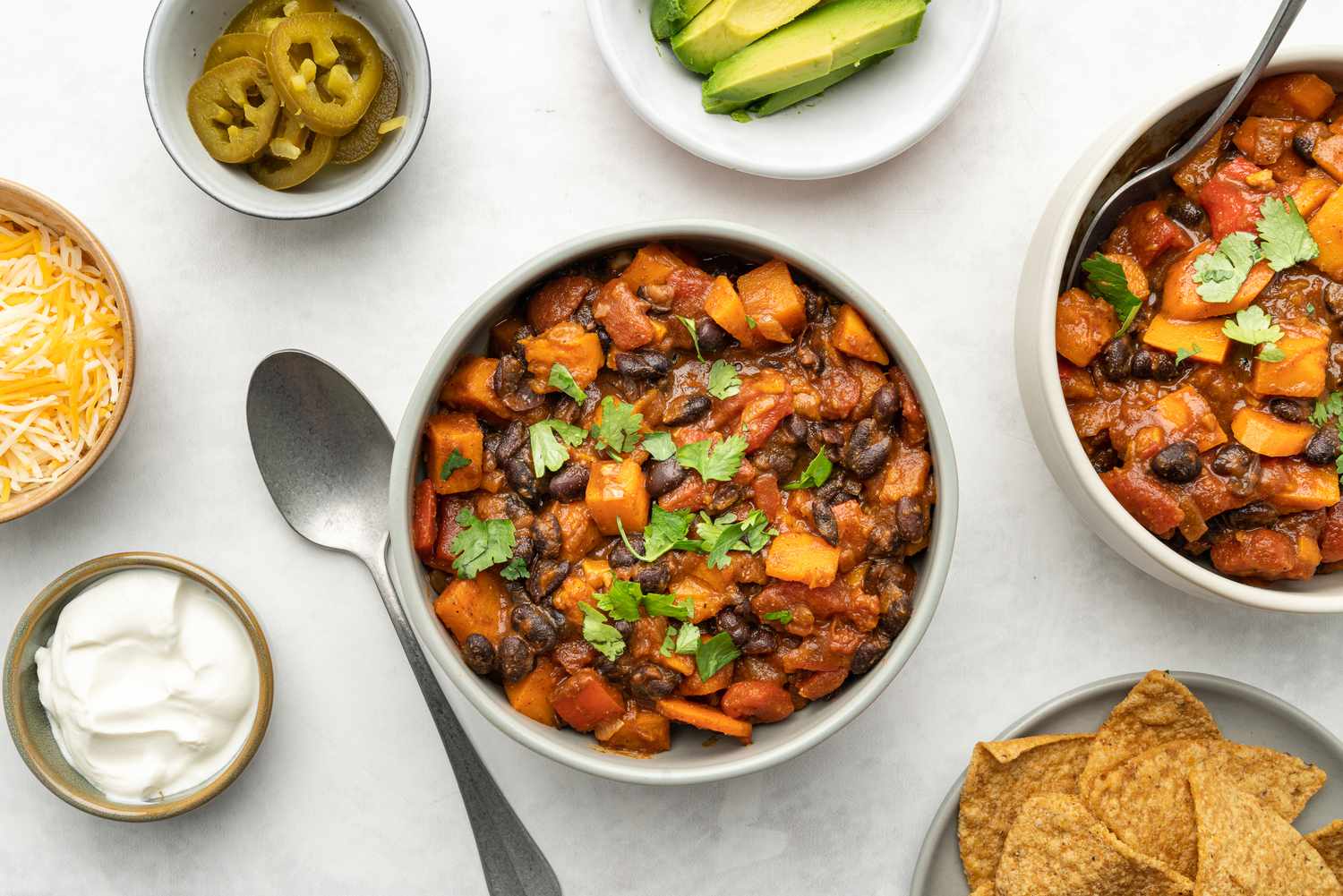
Recipe 6: Baked Salmon with Roasted Vegetables
Ingredients:
- 2 salmon fillets
- 2 cups mixed vegetables (such as broccoli, cauliflower, carrots)
- 2 tablespoons olive oil
- 2 cloves garlic, minced
- 1 teaspoon dried dill
- Salt and pepper to taste
- Lemon wedges for serving
Instructions:
- Preheat the oven to 400°F (200°C).
- Place the salmon fillets on a baking sheet lined with parchment paper.
- In a small bowl, mix together the minced garlic, dried dill, salt, pepper, and olive oil.
- Drizzle the mixture over the salmon fillets, spreading it evenly.
- In a separate bowl, toss the mixed vegetables with olive oil, salt, and pepper.
- Spread the vegetables around the salmon fillets on the baking sheet.
- Bake in the preheated oven for about 12-15 minutes, or until the salmon is cooked to your desired doneness and the vegetables are tender.
- Serve the baked salmon with roasted vegetables, accompanied by lemon wedges for a citrusy touch.

Recipe 7: Spinach and Mushroom Omelette
Ingredients:
- 3 large eggs
- 1 cup fresh spinach leaves
- 1/2 cup sliced mushrooms
- 1/4 cup diced onions
- 1 tablespoon olive oil
- Salt and pepper to taste
- Optional: shredded cheese of your choice
Instructions:
- In a bowl, whisk the eggs until well beaten.
- Heat the olive oil in a non-stick skillet over medium heat.
- Add the diced onions and sliced mushrooms to the skillet and sauté until they are softened.
- Add the fresh spinach leaves to the skillet and cook until wilted.
- Pour the beaten eggs into the skillet, spreading them evenly.
- Let the eggs cook undisturbed for a minute until the edges start to set.
- Gently lift the edges of the omelette with a spatula, tilting the skillet to allow the uncooked eggs to flow underneath.
- Continue cooking until the eggs are mostly set but still slightly runny on top.
- Season with salt and pepper, and sprinkle shredded cheese over one side of the omelette if desired.
- Fold the omelette in half by carefully flipping one side over the other using the spatula.
- Cook for an additional minute to melt the cheese (if added) and ensure the eggs are fully cooked.
- Slide the spinach and mushroom omelette onto a plate and serve it hot, accompanied by a side of fresh salad or whole-grain toast.
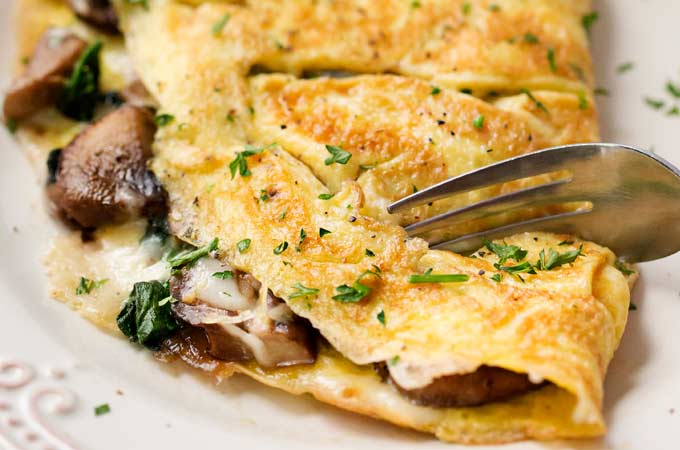
Recipe 8: Lentil and Vegetable Soup
Ingredients:
- 1 cup dried lentils
- 4 cups vegetable broth
- 1 onion, chopped
- 2 carrots, diced
- 2 celery stalks, diced
- 2 cloves garlic, minced
- 1 teaspoon cumin
- 1/2 teaspoon turmeric
- 1/2 teaspoon paprika
- Salt and pepper to taste
- Fresh parsley for garnish
Instructions:
- Rinse the dried lentils under cold water and drain.
- In a large pot, heat a drizzle of olive oil over medium heat.
- Add the chopped onion, diced carrots, and diced celery to the pot, sautéing until they start to soften.
- Stir in the minced garlic, cumin, turmeric, paprika, salt, and pepper, coating the vegetables evenly with the spices.
- Add the rinsed lentils and vegetable broth to the pot, bringing it to a boil.
- Reduce the heat and let the soup simmer for about 25-30 minutes, or until the lentils are tender.
- Adjust the seasoning if needed.
- Serve the lentil and vegetable soup hot, garnished with fresh parsley for added freshness and flavor.

Recipe 9: Tuna Salad Lettuce Wraps
Ingredients:
- 2 cans tuna, drained
- 1/4 cup Greek yogurt
- 2 tablespoons lemon juice
- 1/4 cup diced celery
- 1/4 cup diced red onion
- Salt and pepper to taste
- Lettuce leaves for wrapping
Instructions:
- In a bowl, combine the drained tuna, Greek yogurt, lemon juice, diced celery, and diced red onion.
- Mix well until all the ingredients are evenly incorporated.
- Season with salt and pepper to taste.
- Take a lettuce leaf and spoon a generous amount of the tuna salad onto it.
- Wrap the lettuce leaf around the filling, securing it like a burrito.
- Repeat with the remaining lettuce leaves and tuna salad.
- These tuna salad lettuce wraps make a light and protein-packed meal, perfect for a quick lunch or snack during your calisthenics training.
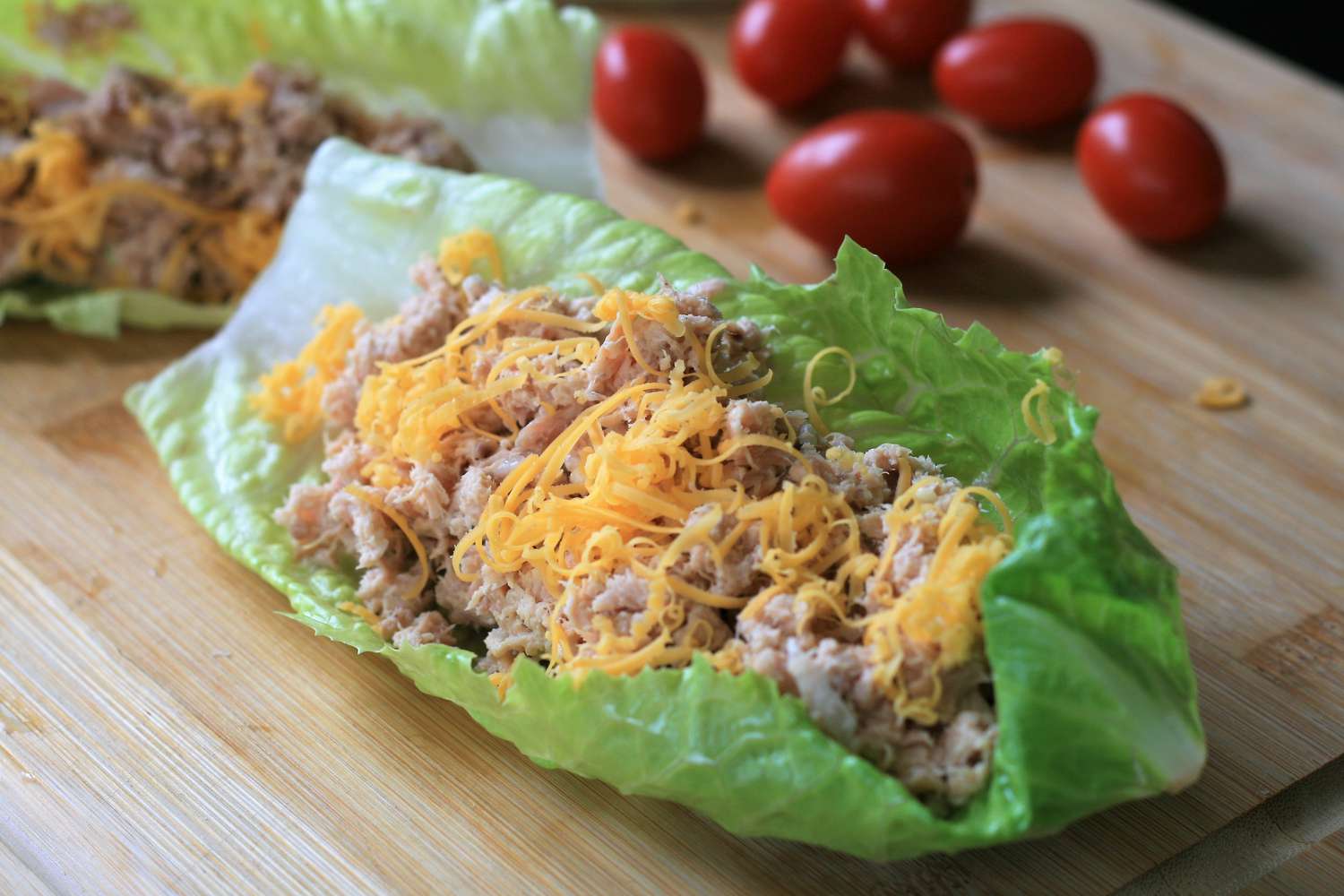
Recipe 10: Berry Spinach Smoothie
Ingredients:
- 1 cup fresh spinach leaves
- 1/2 cup mixed berries (such as strawberries, blueberries, raspberries)
- 1 banana
- 1 cup almond milk (or any milk of your choice)
- 1 tablespoon honey (optional)
Instructions:
- Place the fresh spinach leaves, mixed berries, banana, almond milk, and honey (if using) in a blender.
- Blend on high speed until all the ingredients are smooth and well combined.
- If the smoothie is too thick, add a splash of additional almond milk and blend again.
- Pour the berry spinach smoothie into a glass and enjoy a refreshing and nutrient-rich beverage that complements your calisthenics routine.
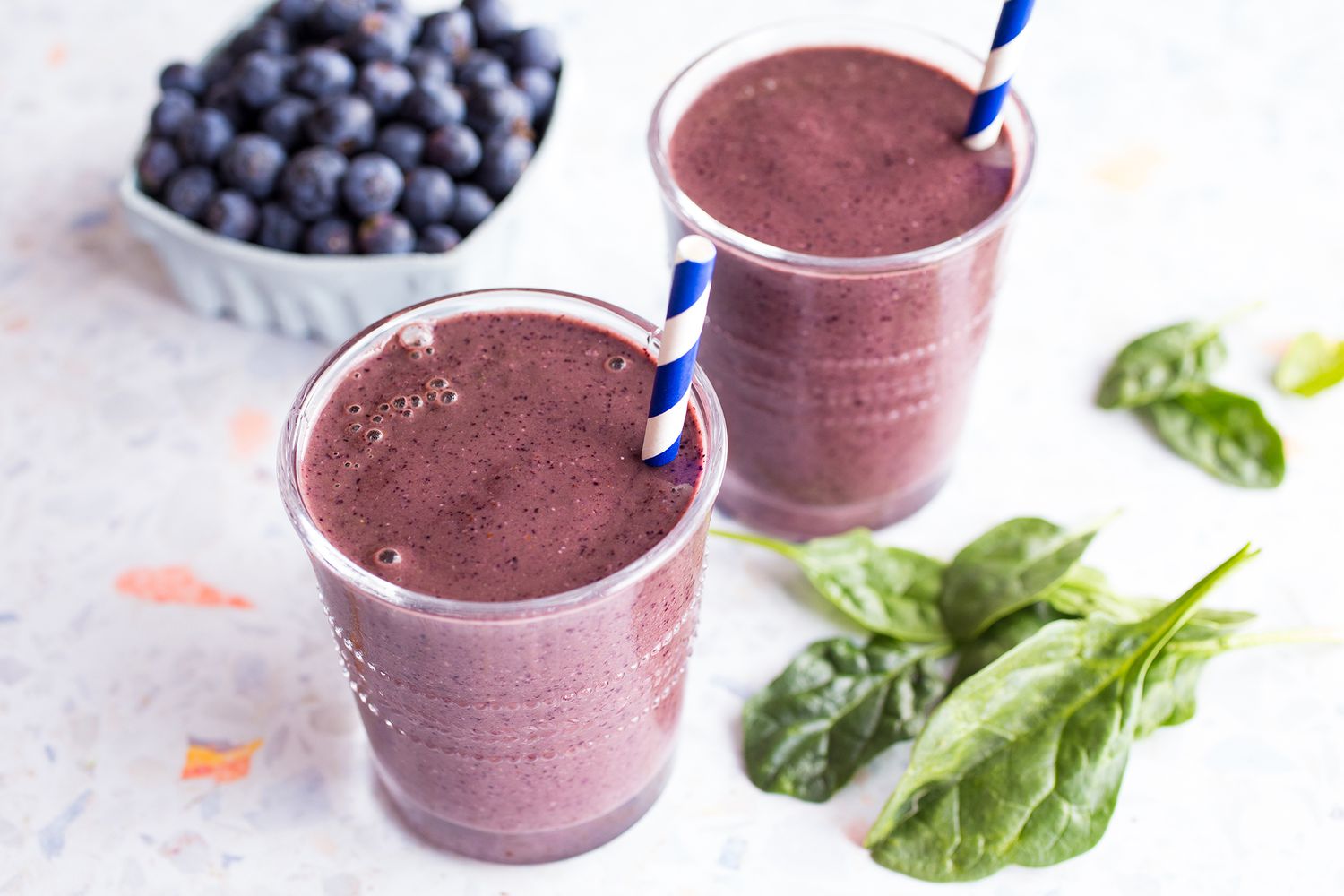
Recipe 11: Cauliflower Fried Rice
Ingredients:
- 1 small head cauliflower, grated or finely chopped
- 1 cup mixed vegetables (such as peas, carrots, bell peppers)
- 2 cloves garlic, minced
- 2 tablespoons low-sodium soy sauce
- 1 tablespoon sesame oil
- 2 green onions, chopped
- 2 eggs, lightly beaten
- Salt and pepper to taste
Instructions:
- Heat a large skillet or wok over medium heat and add the sesame oil.
- Add the minced garlic to the skillet and sauté for a minute until fragrant.
- Add the mixed vegetables to the skillet and stir-fry for about 3-4 minutes until they are tender-crisp.
- Push the vegetables to one side of the skillet and add the beaten eggs to the other side.
- Scramble the eggs until they are cooked through, then combine them with the vegetables.
- Add the grated cauliflower to the skillet and stir-fry for another 3-4 minutes until the cauliflower is tender.
- Pour the low-sodium soy sauce over the mixture and stir well to coat everything evenly.
- Season with salt and pepper to taste.
- Garnish with chopped green onions for added flavor and freshness.
- This cauliflower fried rice is a healthier alternative to traditional rice-based fried rice and provides a low-carb option that aligns with your weight loss and calisthenics goals.

Recipe 12: Grilled Shrimp Salad
Ingredients:
- 1 pound shrimp, peeled and deveined
- 4 cups mixed salad greens
- 1 cup cherry tomatoes, halved
- 1/2 cucumber, sliced
- 1/4 red onion, thinly sliced
- 2 tablespoons olive oil
- 2 tablespoons lemon juice
- 1 clove garlic, minced
- Salt and pepper to taste
Instructions:
- Preheat the grill to medium-high heat.
- In a bowl, combine the olive oil, lemon juice, minced garlic, salt, and pepper to make the marinade.
- Toss the shrimp in the marinade until they are well coated.
- Thread the marinated shrimp onto skewers.
- Grill the shrimp skewers for about 2-3 minutes per side until they are pink and cooked through.
- Remove the shrimp from the skewers and let them cool slightly.
- In a large salad bowl, combine the mixed greens, cherry tomatoes, cucumber slices, and red onion.
- Drizzle the olive oil over the salad and squeeze fresh lemon juice on top.
- Season with salt and pepper to taste, and toss the salad to coat the ingredients with the dressing.
- Add the grilled shrimp to the salad and gently toss again.
- Serve the grilled shrimp salad as a light and satisfying meal that provides lean protein and an array of fresh vegetables to support your weight loss journey.
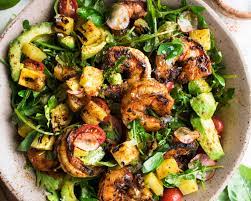
Recipe 13: Avocado and Turkey Wrap
Ingredients:
- 1 whole wheat tortilla
- 4 ounces sliced turkey breast
- 1/4 avocado, sliced
- 1/4 cup baby spinach leaves
- 2 tablespoons hummus
Instructions:
- Lay the whole wheat tortilla flat on a clean surface.
- Spread the hummus evenly over the tortilla.
- Place the sliced turkey breast, avocado slices, and baby spinach leaves on top of the hummus.
- Roll up the tortilla tightly, tucking in the ingredients as you go.
- Slice the wrap in half diagonally to create two servings.
- This avocado and turkey wrap makes a delicious and protein-packed meal on the go, perfect for busy days when you need a quick and nutritious option to fuel your calisthenics workouts.

Recipe 14: Chia Seed Pudding
Ingredients:
- 2 tablespoons chia seeds
- 1 cup unsweetened almond milk (or any milk of your choice)
- 1 tablespoon honey or maple syrup
- 1/2 teaspoon vanilla extract
- Fresh berries for topping
Instructions:
- In a bowl, combine the chia seeds, unsweetened almond milk, honey or maple syrup, and vanilla extract.
- Stir well to ensure the chia seeds are evenly distributed and not clumped together.
- Let the mixture sit for about 5 minutes, then stir again to prevent any clumping.
- Cover the bowl and refrigerate for at least 2 hours or overnight to allow the chia seeds to absorb the liquid and form a pudding-like consistency.
- Before serving, give the chia seed pudding a good stir to ensure it is well mixed.
- Divide the pudding into serving bowls or jars and top with fresh berries.
- This chia seed pudding is a nutritious and satisfying dessert or snack that offers a good source of omega-3 fatty acids and fiber, supporting your weight loss and calisthenics journey.

Recipe 15: Veggie Frittata
Ingredients:
- 6 large eggs
- 1/4 cup diced bell peppers
- 1/4 cup diced onions
- 1/4 cup sliced mushrooms
- 1/4 cup baby spinach leaves
- 2 tablespoons grated Parmesan cheese
- Salt and pepper to taste
Instructions:
- Preheat the oven to 350°F (175°C).
- In a bowl, whisk the eggs until well beaten.
- Heat an oven-safe skillet over medium heat and lightly coat it with cooking spray or olive oil.
- Add the diced bell peppers, onions, and sliced mushrooms to the skillet, sautéing until they are softened.
- Add the baby spinach leaves to the skillet and cook until wilted.
- Pour the beaten eggs into the skillet, distributing them evenly over the vegetables.
- Sprinkle the grated Parmesan cheese over the mixture.
- Season with salt and pepper to taste.
- Cook on the stovetop for a few minutes until the edges start to set.
- Transfer the skillet to the preheated oven and bake for about 15-20 minutes, or until the frittata is set and lightly golden on top.
- Remove from the oven and let it cool for a few minutes before slicing.
- Serve the veggie frittata warm or at room temperature as a protein-rich and nutrient-packed meal that can be enjoyed for breakfast, lunch, or dinner.
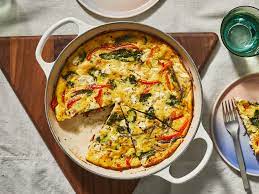
Overcoming Plateaus in Calisthenics
At times, progress in calisthenics workouts may plateau. Here are some strategies to overcome plateaus and continue progressing towards your weight loss goals:
- Increase Intensity: Challenge yourself by increasing the difficulty of exercises or adding variations to engage different muscle groups.
- Circuit Training: Incorporate circuit training, where you perform a series of exercises with minimal rest in between. This helps maintain an elevated heart rate and promotes fat burning.
- Incorporate Plyometrics: Plyometric exercises, such as jump squats or box jumps, can add intensity and improve power and explosiveness.
- Track Your Progress: Keep a workout journal or use fitness tracking apps to record your progress. This helps you identify areas where you can push yourself further.
- Seek Professional Guidance: Consult a qualified fitness professional or personal trainer to get personalized advice and overcome plateaus effectively.
Tips for Beginners
If you’re new to calisthenics and weight loss, consider the following tips:
- Start Slowly: Begin with exercises that suit your fitness level and gradually increase the intensity and complexity as you progress.
- Warm-Up and Cool-Down: Always warm up before starting your workouts to prepare your muscles and joints. Similarly, cool down and stretch afterward to aid in recovery.
- Focus on Proper Form: Pay attention to maintaining proper form during exercises. This ensures maximum effectiveness and reduces the risk of injuries.
- Listen to Your Body: If you experience pain or discomfort during an exercise, modify or stop it. It’s important to prioritize safety and avoid overexertion.
- Stay Consistent: Consistency is key to achieving long-term weight loss and fitness goals. Aim for regular workouts and make calisthenics a part of your lifestyle.
Conclusion
Calisthenics offers a scientifically-backed approach to weight loss. By combining strength training, cardiovascular exercise, and proper nutrition, calisthenics can help you shed excess pounds while improving overall fitness levels. Embrace the power of bodyweight movements, stay committed to your routine, and enjoy the benefits of a healthier and more active lifestyle.
FAQs – Science Behind Calisthenics for Weight Loss
1. Can calisthenics alone help me lose weight?
Calisthenics can be a highly effective tool for weight loss, especially when combined with proper nutrition. By creating a caloric deficit and engaging in regular calisthenics workouts, you can achieve significant weight loss results.
2. Is calisthenics suitable for beginners?
Absolutely! Calisthenics is suitable for individuals of all fitness levels, including beginners. Start with exercises that match your current fitness level and gradually progress as you build strength and endurance.
3. How often should I do calisthenics workouts for weight loss?
The frequency of your calisthenics workouts depends on your goals and fitness level. Aim for at least three to four sessions per week, ensuring adequate rest and recovery between workouts.
4. Can I build muscle through calisthenics while losing weight?
Yes, calisthenics exercises can help build lean muscle mass while losing weight. The combination of bodyweight movements and proper nutrition supports muscle development and preservation.
5. Can I do calisthenics at home without any equipment?
Absolutely! Calisthenics is highly adaptable and can be performed at home without the need for equipment. Many bodyweight exercises can effectively target various muscle groups, providing a challenging workout experience.

